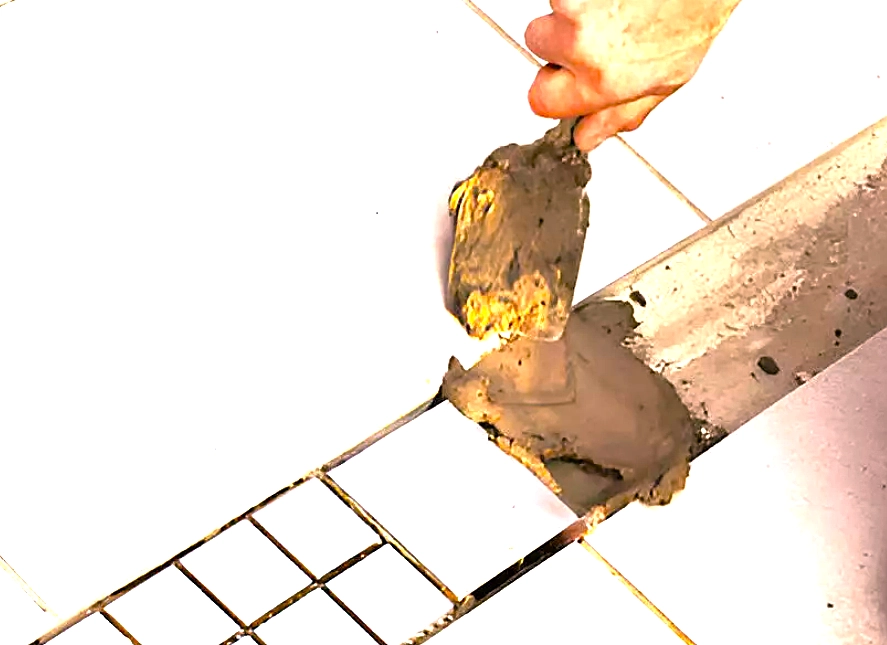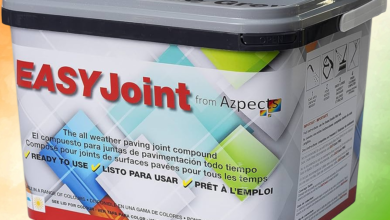Used Mortar Instead of Grout

Inadvertently using mortar in place of grout is one of the frequent errors made when installing tiles. If you are not an experienced tiler, it is quite simple to mistake a bag of grout for mortar.
You don’t have to go crazy if you’ve been in a similar circumstance. I’ll walk you through the process of fixing this below, along with some helpful facts regarding grout and mortar.
Is Mortar a Good Alternative to Grout?
Since this will determine what you should do next, we must first discuss whether mortar can be utilized as a grout substitute.
Grout cannot be replaced with mortar. When installing tiles, mortar is just used to encourage the tile’s adherence to the substrate. Conversely, grout is used to fill in the crevices between tiles.
A common misconception is that grout and mortar are made of the same material. However, that is untrue. Compared to grout, mortar is thicker. You will therefore note that it will not flow freely when used as a filler.
Additionally, because of this characteristic, mortar may dry with gaps or holes between tile spacing. Water can leak through the tiles as a result, and the aesthetics may be impacted.
What Happens If You Inadvertently Use Mortar Instead of Grout?
It is evident from the foregoing that mortar should not be used as a grout substitute, either intentionally or inadvertently. However, if it has already occurred, you can look into these choices.
1. Take out the mortar and grout again.
This is the finest solution for your predicament if you unintentionally used mortar instead of grout and realized your error within minutes.
Get some sponges, wire brushes, or screwdrivers and begin removing the mortar before it dries. Using water makes it easier to remove wet mortar than dried mortar.
Not all of the mortar between your tile spaces needs to be removed. Just enough mortar should be removed to allow space for grout filler.
You must leave adequate space between your tiles so that grout may adhere to them. You can fix your error by preparing and installing your grout after the mortar has been removed.
2. Cover the mortar and leave it alone.
It’s difficult to remove mortar, particularly if it’s already dry. It takes a lot of time, effort, and is messy. For this reason, some people would rather leave the mortar in place as a filler between tile areas. However, they apply a sealer on it to increase its longevity.
Only if the mortar between the tile spaces was correctly laid should you apply a sealant. The mortar will eventually crumble and sustain damage if holes remain, rendering the sealant useless.
This solution also works in situations where the color of the mortar between tile areas is acceptable to you. You will be forced to take it off if you don’t like the color.
Since there is no guarantee that mortar will perform better than grout, I do not advise this latter alternative. Make use of it as a last resort.
What Makes Grout Different From Mortar?
We should compare these two construction materials in depth now that you know what to do if you inadvertently use mortar instead of grout. You’re less likely to make the same error again if you know more about mortar and grout.
To fill in the gaps between tiles, grout is utilized. Grout keeps newly put tiles in place in addition to making them look more attractive. Additionally, it keeps trash and water from getting between tile spaces.
Tiles are very nice to walk on thanks to grout. Portland cement and polymers are the main ingredients used to make grout. The design is determined by the addition of color pigments. There are both pre-mixed and dry varieties of grout.
Conversely, mortar is an adhesive for tiles. Tile and substrates like cement boards are held together by this bonding agent. Mortar is applied beneath the tile rather than in between.
Lime, Portland cement, and coarse sand are used in its creation. Mortars come in various varieties, including thinset, type S, N, O, M, and K. Every formula has a specific use. Since this isn’t the main topic of today’s article, I won’t go into great detail.
Portland cement is an ingredient in both mortar and grout, but they are two distinct products and should not be used interchangeably.
The sort of mortar and grout that should be used with tiles is always made explicit by tile manufacturers. You run a very high risk of failing if you disregard these suggestions.
If mortar is inadvertently used in place of grout, should it be scraped out?
Even though this method may seem inconvenient, it’s the best one. If mortar was inadvertently used in place of grout, it is possible to seal it. However, you must keep in mind that grout and mortar are not interchangeable.
There will still be places between your tiles and water will seep through if the mortar dries with cracks or gaps. Moisture damage is unavoidable if you haven’t put in a water barrier underneath the tile.
Look for a screwdriver or a wire brush and begin scraping off any mortar that you may have unintentionally used in place of grout, if at all feasible.
Water has the ability to soften mortar, which facilitates its removal. You can use acid-based cleansers to reduce the mortar’s adhesive strength if it is extremely dry.
You will have peace of mind knowing that you have used the proper product and that it will last you as long as possible when you replace the mortar between tile areas with grout.
Additionally, scraping guarantees that you won’t have to put up with grout that you don’t like.
When mortar is used in place of grout, how long does it last?
The amusing thing is that mortar has been used for years in place of grout by some people by mistake.
Adding a sealant can help extend the mortar’s life between tile intervals. Mortar can last for a very long time if it was laid properly and left no gaps when it cured.
There are numerous “ifs and buts” in this situation. I don’t suggest it because of this.
Conversely, is it possible to use grout in place of mortar?
Additionally, grout cannot be used in place of mortar. There is no adhesive in grout. It’s a filler. You will therefore be in for a nasty surprise if you sprinkle grout underneath tiles in the hopes that they will adhere to the substrate. Eventually, the tiles will be removed.
Fortunately, grout can be transformed into mortar by adding acrylic glue. However, this is only effective with sanded grout. It is not possible to turn other kinds of grout into mortar.
Regardless of these modifications, grout will always weigh less than mortar. As a result, this may compromise the tiles’ structural soundness.
There won’t be space for the aforementioned modifications if you inadvertently use grout rather than mortar. The only choice available to you will be to remove the grout and use mortar in its place.

